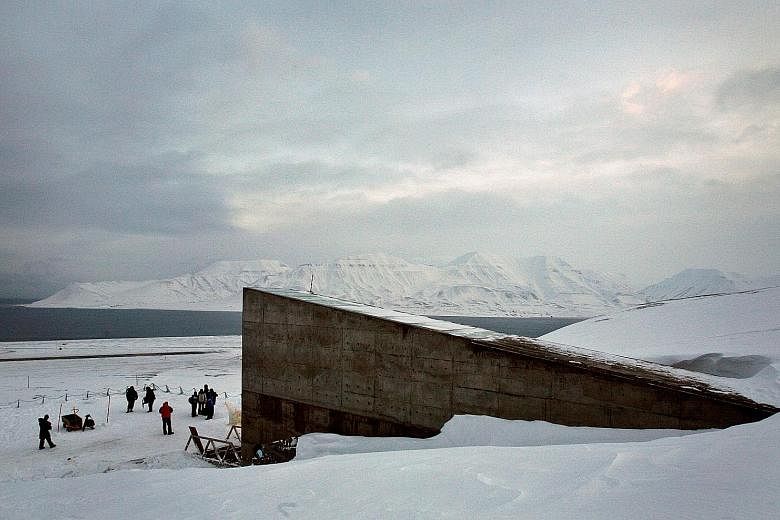STOCKHOLM • Norway has said it would boost protection of a seed storage vault designed to protect the world's crops from disaster after soaring temperatures caused water to leak into its entrance.
Situated deep inside a mountain on a remote Arctic island in a Norwegian archipelago, the Svalbard Global Seed Vault, dubbed the "doomsday" vault, is the largest of its kind and can store up to 2.5 billion seeds.
Freezing temperatures inside the vault keep the seeds, sealed in packages and stored on shelves, usable for a long period of time. Permafrost and thick rock should guarantee that the seeds are frozen and secured for centuries.
But last October, the warmest year on record, melting permafrost caused water to leak about 15m into the entrance of a 100m tunnel inside the vault.
No damage was caused to the seeds and they remain safe inside the vault at the required storage temperature of minus 18 deg C.
But the vault's managers are now constructing a waterproof wall inside for additional protection, a Norwegian government spokesman told AFP last Saturday, adding that all heat sources would also be removed from inside the vault.
"It's not good to have unnecessary heat inside if water is coming in and permafrost is melting", said Ms Hege Njaa Aschim. "We have to listen to climate experts (and) we are prepared to do anything to protect the seed vault."
The vault currently stores more than 880,000 seed samples from nearly every country in the world, including food staples such as maize, rice, wheat, cowpea and sorghum from Africa and Asia. It also protects European and South American varieties of aubergine, lettuce, barley and potatoes.
The Svalbard vault was opened in 2008 with the aim to provide a "fail-safe seed storage facility, built to stand the test of time and the challenge of natural or man-made disasters," the organisation says on its website. "It is the final back up," it adds.
Each country that deposits the seeds into the vault has control and access to its own material.
AGENCE FRANCE-PRESSE

